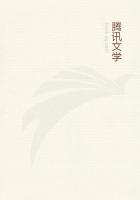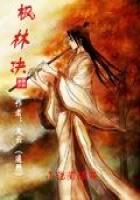next,black with blaze and three white legs (bad,because whitehoofs are brittle):next,bay with white blaze and white fore and hind legs.'He also said,'Prosperity is with sorrel horses;'and praised a sorrel with white forehead and legs;but he dispraised the'Shikal,'which has white stockings (Arab.'Muhajjil') on alternate hoofs (e.g. right hind and left fore). The curious reader will consult Lady Anne Blunt's'Bedouin Tribes of the Euphrates,with some Account of the Arabs and their Horses'(1879);but he must remember that it treats of the frontier tribes. The late Major Upton also left a book'Gleanings from the Desert of Arabia'(1881);but it is a marvellous production deriving e.g. Khayl (a horse generically) from Kohl or antimony (p. 275). What the Editor was dreaming of I cannot imagine. I have given some details concerning the Arab horse especially in AlYaman,among the Zu Mohammed,the Zu Husayn and the Banu Yam in Pilgrimage iii. 270. As late as Marco Polo's day they supplied the Indian market via Aden;but the'Eye o AlYaman'has totally lost the habit of exporting horses.
[138] The shoveliron which is the only form of spur.
[139] Used for the dromedary: the baggagecamel is haltered.
[140] Arab.'Harwalah,'the pas gymnastique affected when circumambulating the Ka'abah (Pilgrimage iii. 208).
[141]'This night'would be our'last night': the Arabs,I repeat,say'night and day,'not'day and night.'
[142] The vulgar belief is that man's fate is written upon his skull,the sutures being the writing.
[143] Koran ii. 191.
[144] Arab.'Tasbih'=saying,'Subhan' Allah.'It also means a rosary (Egypt. Sebhah for Subhah) a string of 99 beads divided by a longer item into sets of three and much fingered by the would appear pious. The professional devotee carries a string of wooden balls the size of pigeons' eggs.
[145] The pigeon is usually made to say,''Wahhidu Rabbakumu''llazi khalakakum,yaghfiru lakum zambakum'='Unify (Assert the Unity of) your Lord who created you;so shall He forgive your sin!'As might be expected this'language'is differently interpreted. Pigeonsuperstitions are found in all religions and I have noted (Pilgrimage iii,218) how the Hindu deity of Destruction reproduction,the third Person of their Triad,Shiva and his Spouse (or active Energy),are supposed to have dwelt at Meccah under the titles of Kapoteshwara (Pigeongod) and Kapoteshi (Pigeongoddess).
[146] I have seen this absolute horror of women amongst the Monks of the Coptic Convents.
[147] After the Day of Doom,when men's actions are registered,that of mutual retaliation will follow and all creatures (brutes included) will take vengeance on one another.
[148] The Comrades of the Cave,famous in the Middle Ages of Christianity (Gibbon chaps. xxxiii.),is an article of faith with Moslems,being part subject of chapter xviii.,the Koranic Surah termed the Cave. These Rip Van Winkletales begin with Endymion so famous amongst the Classics and Epimenides of Crete who slept fiftyseven years;and they extend to modern days as La Belle au Bois dormant. The Seven Sleepers are as many youths of Ephesus (six royal councillors and a shepherd,whose names are given on the authority of Ali);and,accompanied by their dog,they fled the persecutions of Dakianus (the Emperor Decius) to a cave near Tarsus in Natolia where they slept for centuries. The Caliph Mu'awiyah when passing the cave sent into it some explorers who were all killed by a burning wind. The number of the sleepers remains uncertain,according to the Koran (ibid. v. 21) three,five or seven and their sleep lasted either three hundred or three hundred and nine years. The dog (ibid. v. 17) slept at the caveentrance with paws outstretched and,according to the general,was called'Katmir'or'Kitmir;'but AlRakim (v. 8) is also applied to it by some. Others hold this to be the name of the valley or mountain and others of a stone or leaden tablet on which their names were engraved by their countrymen who built a chapel on the spot (v. 20). Others again make the Men of AlRakim distinct from the Cavemen,and believe (with Bayzawi) that they were three youths who were shut up in a grotto by a rockslip.
Each prayed for help through the merits of some good deed: when the first had adjured Allah the mountain cracked till light appeared;at the second petition it split so that they saw one another and after the third it opened. However that may be,Kitmir is one of the seven favoured animals: the others being the Hudhud (hoopoe) of Solomon (Koran xxii. 20);the shecamel of Salih (chaps. Ixxxvii.);the cow of Moses which named the Second Surah;the fish of Jonah;the serpent of Eve,and the peacock of Paradise. For Koranic revelations of the Cave see the late Thomas Chenery (p. 414 The Assemblies of AlHariri: Williams and Norgate,1870) who borrows from the historian Tabari.
[149] These lines have occurred in Night cxlvi.: I quote Mr.
Payne by way of variety.
[150] The wolf (truly enough to nature) is the wicked man without redeeming traits;the fox of Arab folklore is the cunning man who can do good on occasion. Here the latter is called'Sa'alab'which may,I have noted,mean the jackal;but further on'Father of a Fortlet'refers especially to the fox.
Herodotus refers to the gregarious Canis Aureus when he describes Egyptian wolves as being'not much bigger than foxes'(ii. 67).
Canon Rawlinson,in his unhappy version,does not perceive that the Halicarnassian means the jackal and blunders about the hyena.
[151] The older'Leila'or'Leyla': it is a common name and is here applied to woman in general. The root is evidently'layl'=nox,with,probably,the idea,'She walks in beauty like the night.'
[152] Arab. Abu'lHosayn;his hole being his fort (Unexplored Syria,ii. 18).
[153] A Koranic phrase often occurring.
[154] Koran v. 35.















